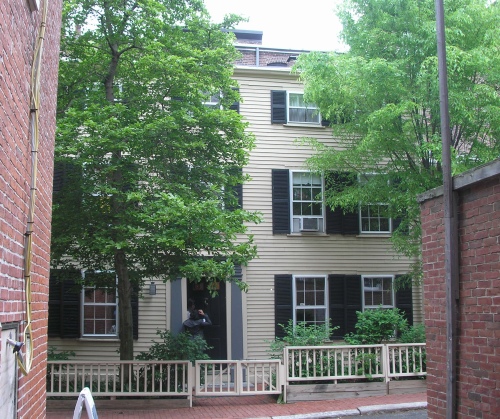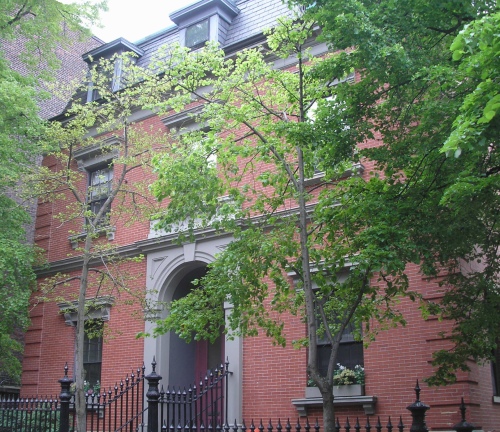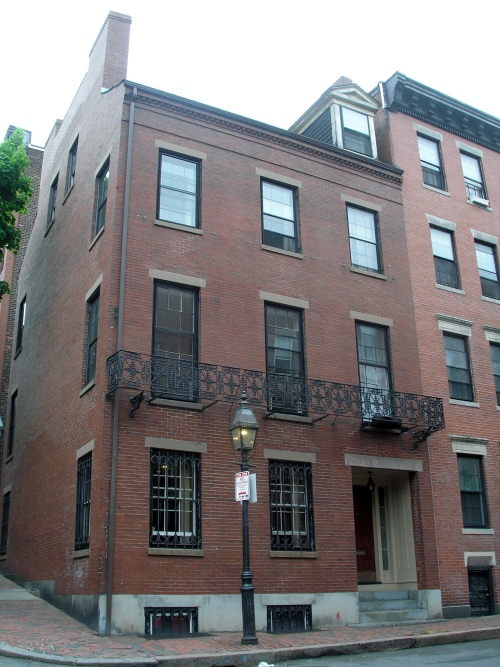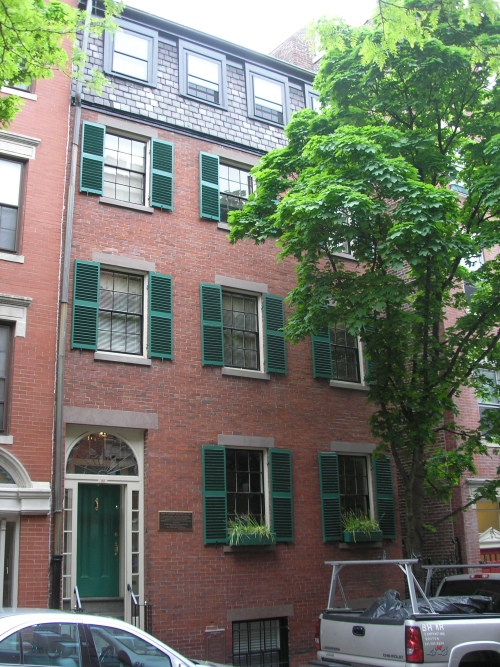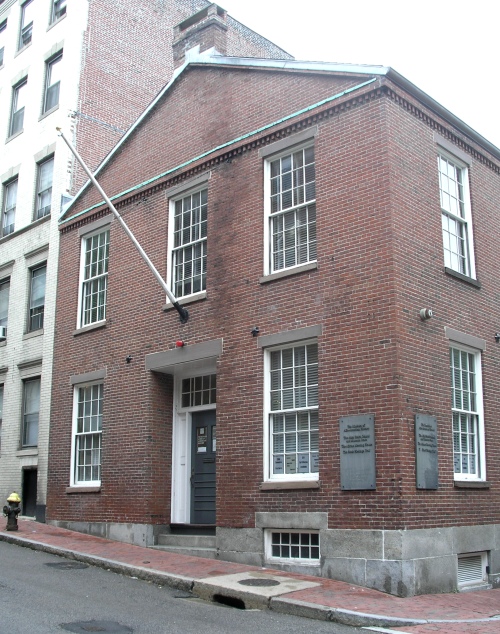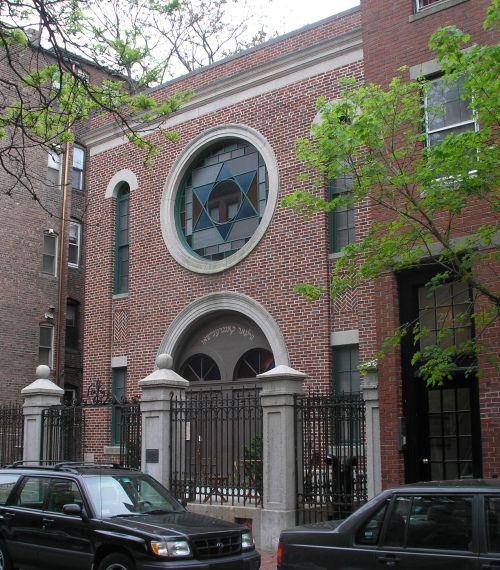John T. Hilton House (1826)
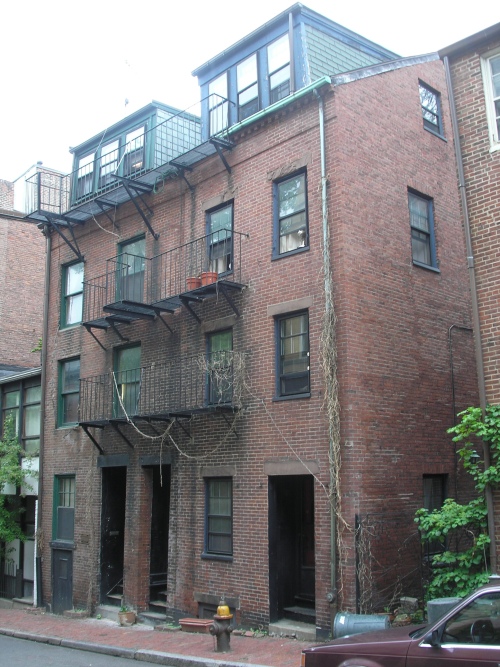
The house at 73 Joy Street in Beacon Hill in Boston was built in 1825-1826 for black hairdresser and musician John B. Holmes. The house is named for John Telemachus Hilton (1801-1864) (pdf), also a hairdresser, who was a Grand Master of the Prince Hall Masonic Lodge, a founder of the Massachusetts General Colored Association, a member of the Boston Vigilance Committee and on the Board of Managers of the Anti-Slavery Society. Hilton only briefly lived in the house, which is also associated with the brothers, Anthony F. Clark (who lived there) and Jonas W. Clark (who used it as a rental property). The house is also one of several boardinghouses owned by John R. Taylor, who is known to have assisted fugitive slaves. [For more info, see this Document]
